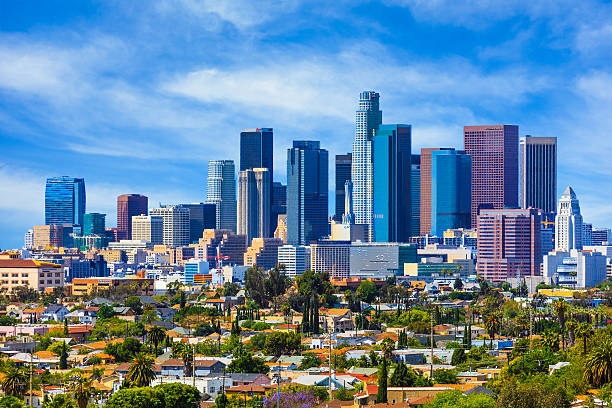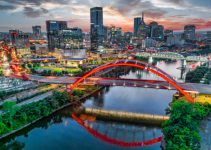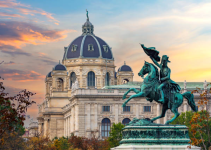Los Angeles has this way of charming you from a distance. The palm trees sway against impossibly blue skies, the beaches stretch for miles, and somewhere in the hills, dreams are supposedly coming true. But here’s what nobody tells you until you’re stuck in traffic on the 405, sweating through your shirt because you thought 15 miles meant a quick drive.
LA is gorgeous. It’s also tricky if you don’t know what to watch out for.
The city doesn’t hand out instruction manuals, and that’s part of its appeal. Still, there are pitfalls you can absolutely skip if you know where they’re hiding. Your time here should be spent soaking up sunshine and finding hidden gems, not learning expensive lessons the hard way.

Things to Avoid in Los Angeles
Whether you’re visiting for a long weekend or you just moved here last Tuesday, these missteps can drain your wallet, waste your precious time, and leave you wondering why everyone raves about this place. Here’s what to steer clear of so you can actually enjoy what makes LA special.
1. The 405 Freeway During Rush Hour (Or Really, Anytime Between 7 AM and 7 PM)
You’ve probably heard the jokes about LA traffic. They’re not exaggerating.
The 405 freeway is basically a 72-mile parking lot masquerading as a highway. Locals call it “the 405” (always with the “the,” that’s how we do it here), and they say it with a certain tone. That tone means: avoid it if you value your sanity. During morning and evening rush hours, what should be a 20-minute drive turns into an hour-plus crawl where you’ll have time to question all your life choices.
Even mid-day can be rough. A fender bender near the Getty Center exit? You’re done. Construction near LAX? Forget about it. The 405 connects the Westside to the Valley, so everyone needs it, which means everyone’s stuck on it together, creating one massive communal frustration experience.
Your better move? Use Waze or Google Maps and actually listen when they suggest alternative routes. Surface streets often save you time, even when they look longer on the map. The Pacific Coast Highway is slower but infinitely more pleasant if you’re headed to Malibu. And if you absolutely must take the 405, try to travel before 6:30 AM or after 8 PM. Your stress levels will thank you.
2. Eating on Hollywood Boulevard
Hollywood Boulevard sounds glamorous until you’re standing there, surrounded by people in dirty superhero costumes demanding tips for photos you didn’t ask for.
The restaurants lining this famous street mostly survive on tourist traffic, which means they don’t have to try very hard. You’ll pay $18 for a mediocre burger that would cost $12 anywhere else and taste twice as good. The pizza is sad. The Chinese food tastes like it’s been sitting under a heat lamp since breakfast. You can literally see better options from where you’re standing, but they’re just off the main drag.
Here’s the thing about Hollywood. The Walk of Fame is worth a quick stroll if you want to see it, sure. Find your favorite star, snap a photo, and check it off the list. But then get out of there. Head a few blocks in any direction and you’ll find actual LA food. Go to Thai Town for boat noodles that cost $8 and blow your mind. Hit up Los Feliz for casual California cuisine that locals actually eat. Even the food trucks parked on side streets serve better meals than most of what’s on Hollywood Boulevard.
Save your appetite for places where the locals go. You’ll eat better and spend less. That’s a win you can taste.
3. Underestimating How Long It Takes to Get Anywhere
LA sprawls. We’re talking 503 square miles of city, and that’s not counting the greater metro area.
When your friend suggests meeting for brunch and they live in Silver Lake while you’re staying in Santa Monica, that sounds totally doable. It’s only 14 miles! Except it’s going to take you 45 minutes on a good day, and probably an hour if you’re going on a Sunday when everyone else had the same brunch idea. People in other cities think nothing of traveling 30 minutes for dinner. Here, 30 minutes might get you six miles.
This distance thing catches everyone off guard at first. You’ll plan to hit Venice Beach, then Griffith Observatory, then dinner in Downtown, all in one day. On paper, it looks reasonable. In reality, you’ve just scheduled yourself for four hours of driving and approximately 90 minutes of actual fun. You’ll be exhausted, cranky, and you’ll miss the sunset at the beach because you’re still stuck on the 10 freeway.
Better approach? Pick a neighborhood or zone for each day. Spend your morning in Santa Monica and Venice. Another day, do the eastside—Los Feliz, Silver Lake, Echo Park. Keep Downtown for its own adventure. This way, you’ll actually experience these places instead of just seeing them through your windshield. Plus, you’ll discover those neighborhood coffee shops and bookstores that make LA special, the ones you’d miss if you’re always rushing to the next destination.
4. Paying for Beach Parking Without Exploring Your Options First
The beach parking lots will happily take $20 to $30 of your money for the day.
Santa Monica, Manhattan Beach, Venice—they’ve all got official lots that charge what feels like highway robbery just to park near some sand and water. And sure, convenience matters. If you’ve got a car full of beach gear and kids who are already whining, that lot starts looking pretty good. But most of the time, you’ve got better options if you’re willing to walk a few extra blocks.
Street parking exists almost everywhere near the beaches. It’s metered, usually $2 to $4 an hour, but that adds up to way less than the lot if you’re staying for a few hours. The trick is reading the signs carefully (more on that later). In Venice, you can find free parking on some residential streets if you go a few blocks inland from the boardwalk. Manhattan Beach has metered spots along Highland Avenue. Even Malibu has pullouts along PCH where you can park for free, though they fill up fast on weekends.
Sometimes you’ll walk 10 minutes to reach the sand. Your legs work fine. You’ll survive. That $25 you saved? That’s lunch at a good taco stand, or drinks with your toes in the sand later. The parking lot will still be there if you really need it, but at least check your other options first.
5. Sticking Only to the Famous Neighborhoods and Missing the Real LA
Everyone’s heard of Beverly Hills and Santa Monica, and Hollywood. They’re famous for a reason.
But here’s what happens if that’s all you see: you’ll leave LA thinking it’s just overpriced tourist traps and traffic. You’ll miss the murals covering entire buildings in the Arts District. You’ll never taste the Armenian food in Glendale that’s so good you’ll want to go back the next day. You won’t discover the vintage shops in Highland Park where locals find their coolest pieces, or the hiking trails in Topanga Canyon that make you forget you’re 20 minutes from millions of people.
LA is really a collection of distinct neighborhoods, each with its own personality. Koreatown comes alive at night with karaoke bars and sizzling BBQ. Atwater Village feels like a small town tucked inside a big city. Culver City has an art scene that rivals anything in Downtown. These places don’t show up on the basic tourist maps, which is exactly why they’re still authentic.
The famous spots have their place. Drive through Beverly Hills if you want to see absurd wealth on display. Take your photo at the Santa Monica Pier. But carve out time for neighborhoods you’ve never heard of. Talk to your rideshare driver about where they like to eat. Ask the barista at your coffee shop what they do on weekends. You’ll get recommendations that no guidebook includes, and those are usually the experiences you’ll actually remember years later.
6. Expecting the Hollywood Walk of Fame to Be the Highlight of Your Trip
Let’s get real about the Walk of Fame. It’s a sidewalk with names on it.
That’s basically it. Famous names, sure. Stars you love, probably somewhere among the 2,700+ markers. But it’s also dirty, crowded, and surrounded by those aggressive costumed characters we mentioned earlier. The whole experience takes about 20 minutes if you’re generous with your time, and then you’re standing there thinking, “Okay, now what?” Meanwhile, your parking meter is running, and you drove 45 minutes to get here.
The disappointment is real and consistent. People build up this attraction in their minds because it’s so iconic, so recognizable from movies and TV shows. Then they arrive and realize it’s just… a sidewalk. With tourists. And someoneis trying to sell them a bus tour. There’s no magic, no sparkle, just a lot of people looking vaguely let down while taking obligatory photos.
Does this mean skip it entirely? Not necessarily. If you’re in the area anyway, walk a block or two, find a few names you recognize, snap your pictures. Just don’t make it the centerpiece of your LA experience. There are so many better ways to spend your time here. Hike up to the Hollywood Sign viewpoint for an actual view. Catch a show at the Hollywood Bowl. Explore the vintage shops on Melrose. These give you actual experiences rather than just photo ops on a sidewalk that needs a good power washing.
7. Ignoring Parking Signs (Or Not Reading Them Carefully Enough)
LA parking enforcement doesn’t mess around. They’re efficient, thorough, and utterly unsympathetic to your confusion.
The parking signs here are legendary for their complexity. You’ll see one pole with four different signs stacked on top of each other, each with different hours and different rules. “No parking Monday and Wednesday, 9 AM to 11 AM for street cleaning. Two-hour parking on Tuesday, Thursday, Friday from 8 AM to 6 PM. Permit parking only after 6 PM. Red curb 20 feet north.” You’ll need a law degree to decode what time you’re actually allowed to park there.
But here’s the expensive part: if you get it wrong, tickets start at $68 and go up from there. Parking in a red zone? That’s $98. Block a driveway by three inches? Someone will call parking enforcement faster than you can get your phone out to take a picture of the sign you misread. And if you ignore that ticket, thinking you’ll never be back in LA, so who cares, they’ll happily add fees and eventually send it to collections. It follows you.
Your defense strategy? Take 30 extra seconds to read every sign on the block where you’re parking. Check both directions because sometimes there are additional restrictions posted on different poles. If you’re even slightly unsure, don’t risk it. Park in a lot or garage instead. Yes, you’ll pay for parking, but $15 for a few hours beats $68 for a ticket, plus the frustration of dealing with LA’s parking citation system, which is about as user-friendly as filing your taxes during an earthquake.
8. Visiting in August and Expecting Beach Weather, Or in October and Packing Only Shorts
LA weather is complicated in ways that surprise people who think California means sunny all the time.
August is actually kind of miserable near the coast. We get this thing called June Gloom that sometimes extends into July and August—a marine layer of clouds and fog that sits over the beaches until afternoon. You’ll wake up to gray skies and cool temperatures, maybe 60 degrees, wondering where your California sunshine went. By 2 PM, it might burn off, or it might not. Meanwhile, it’s 95 degrees in the Valley and you’re wearing a hoodie at the beach, feeling betrayed by your weather app.
Then there’s October. People assume it’s fall, so they pack accordingly. Light jackets, maybe some jeans. Cool weather clothes. But October in LA is often the hottest month. The marine layer is gone, the offshore winds blow in hot air from the desert, and suddenly it’s 90 degrees and you’re dying in your “California casual” fall outfit. We call them Santa Ana winds, and they make October feel more like summer than June does.
The better plan? Pack layers no matter when you visit. A light jacket or sweater is essential even in summer because mornings and evenings get cool, and that marine layer is real. Check the specific neighborhoods where you’ll be spending time because temperatures vary wildly across the city. It might be 70 at the beach and 90 in Pasadena on the same day. And if you’re coming between May and August, don’t be shocked if your beach days start cloudy. That’s just how LA works near the coast.
9. Relying Exclusively on Rideshares to Get Around
Uber and Lyft are convenient until you check the price for a ride from Downtown to the beach on a Friday night and see $65 staring back at you.
Rideshares made sense when they first hit LA. Cheap, easy, no parking hassles. But those days are mostly gone. Prices have climbed to where they’re often more expensive than renting a car for the day, especially if you’re planning multiple trips. Add in surge pricing during busy times, and you’re hemorrhaging money just getting from place to place. That weekend in LA just got twice as expensive as you budgeted for.
Plus, being dependent on rideshares limits your spontaneity. You can’t easily chase a sunset up the coast or take a detour to that taco truck someone mentioned because every change means another $30 to $50 ride. You’re stuck planning your day around minimizing trips, which means you might skip things you’d actually enjoy.
Consider renting a car if you’re visiting for more than a day or two. Yes, traffic exists. Yes, parking can be annoying. But the freedom to explore on your own schedule, to stop whenever something catches your eye, to hit multiple neighborhoods without watching the rideshare meter climb—it’s worth it. LA really is a driving city, built around car culture for better or worse. Fighting that reality just makes your trip harder. The Metro is expanding and works great for certain destinations, so mix that in too. Just don’t rely on rideshares alone unless you’re ready to spend a fortune on transportation.
10. Choosing Chain Restaurants When Some of the Country’s Best Food Is All Around You
Why would you eat at Cheesecake Factory in LA? You have that at home.
This city has every cuisine you can think of, cooked by people who brought their recipes from their home countries and perfected them here. You can eat authentic Ethiopian food in Little Ethiopia, get Thai boat noodles for $8 that taste exactly like they do in Bangkok, find Oaxacan moles that took two days to make, or try Japanese ramen from a chef who trained in Tokyo. This is one of the most diverse food cities in America, maybe the most diverse, and you’re sitting in an Olive Garden?
The chains know you’ll come in because they’re familiar and safe. No surprises, no risk of trying something new and maybe not loving it. But that safety means you’re missing what makes LA’s food scene incredible—all those family-run spots where the mom is in the kitchen making food exactly how she learned from her mom, where the spice levels are real, where the menu isn’t dumbed down for tourists who might complain that the curry is too curry-flavored.
Start with the ethnic enclaves scattered across LA. Koreatown, Thai Town, Little Armenia, and the San Gabriel Valley for Chinese food that rivals anything in China. Read local food blogs or check Instagram for recommendations from people who actually live here. Ask your hotel front desk where they eat when they’re off work. Try that random strip mall restaurant with no decor but a packed parking lot—that’s usually a sign of something special. Food is one of LA’s genuine superpowers. Using it to eat the same stuff you can get anywhere is like going to Paris and only eating McDonald’s. You’re technically eating, but you’re missing the entire point.
Wrapping Up
LA takes some figuring out. It’s not a city that reveals itself immediately. But once you learn what to skip and where to focus your energy, the good stuff becomes obvious.
Skip the traffic nightmares, the tourist traps, and the expensive mistakes. Instead, find the neighborhoods where real people live and eat, and hang out. Give yourself time to discover what’s around the next corner. Leave room for the unexpected.
That’s when LA stops being frustrating and starts being unforgettable. That’s when you get it.


